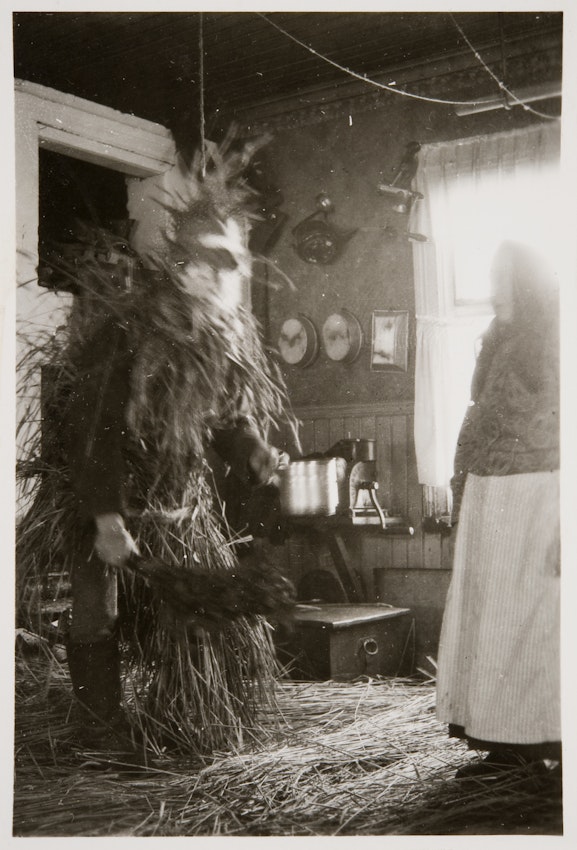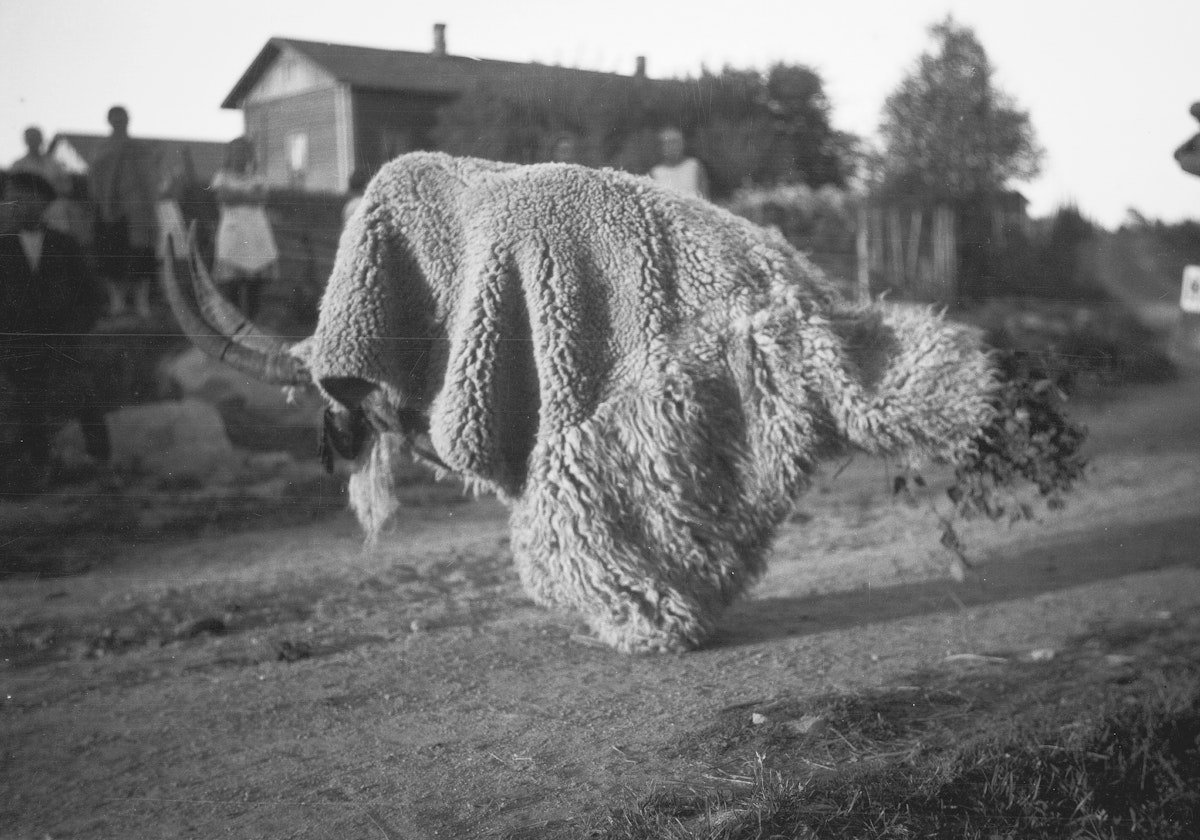
Season’s Bleatings: Finnish Photographs of the Nuuttipukki (1928)
A goat thing lurks behind the barn. There are horns and an empty skull, but its fleece looks thieved from a sheep. Where you might expect a tail, there’s only a truss of twigs — a sauna vihta, made for whipping flesh. It appears to be wearing boots. This is nuuttipukki, and he has come to slurp your booze and feast on scraps. You must let him in.
“Good Tuomas brought Christmas”, a Finnish saying tells us, “and bad Nuutti took it away”. Appearing in written sources from the mid-nineteenth century, and suspected to originate much earlier, nuuttipukki (aka nuutipukki, knuutipukki, knuuttipukki, or knuutinpukki) appears on Saint Knut’s Day, January 13, the end of the Christmas season in Finland. Once possibly part of a fertility rite associated with the harvest festival Kekri — in which shamans donned bovid horns — this seasonal goat became Christianized in the Santa Clause–like figure of joulupukki, literally “Christmas goat”, part of a wider Yule tradition in northern Europe.
Nuuttipukit, on the other hand, have shades of Krampus: they do not bring presents to children, but roam together in flocks, knocking on doors and grazing on beer and leftover casseroles. In earlier times, these goats were eligible, single men, but remained anonymous, so as not to attract the attention of the dead. Although their costumes and behavior could be frightening, it was considered bad luck to turn away a knocking nuutti. They wore birchbark or leather masks, and draped themselves in skins, coats, or straw, sometimes brandishing swords.
 Scroll through the whole page to download all images before printing.
Scroll through the whole page to download all images before printing.Aino Oksanen, “Nuutti Being Prepared”, 1926 — Source.
Since kegs ran low after Christmas, nuuttipukit often drank the thick, cloudy dregs at a barrel’s bottom, and became associated with yeast. Havoc ensued if a goat’s thirst went unslaked. According to legend, after exiting a house, they occasionally wrote receipts on its walls, notes to future goat boys that a debt had been paid. A version of the tradition lives on in southwestern Finland, especially the region of Satakunta, and the Åland Islands, although the drunk and randy goat bachelors have been replaced by children, and the pantry-raiding by song and pantomime. Finland’s Nordic neighbors have their own goaty tendencies: Norwegians have been known to don disguises and go julebukking; and Swedish citizens of Gävle erect an annual goat effigy that makes The Wicker Man seem almost run of the mill.
The photographs of nuuttipukit collected below were taken in 1928 near the town of Lunkaa in the municipality of Tammela by Toivo Kakoranta, a Finnish folklorist, intelligence officer, and magazine editor, who helped preserve regional stories and dialects in the tradition of Elias Lönnrot. Along with these images, you can enjoy a cheery holiday song collected near Heinola in 1914:
I fed the Nuutti, I gave the Nuutti drink
I put the Nuutti in the corner to sleep.
The Nuutti slept in its filth, sinking into its rags.
That over there . . .
if something is lying over there
then I am probably naughty,
if I come round to yours.
Special thanks to Emma Vehviläinen.
Nov 28, 2023









